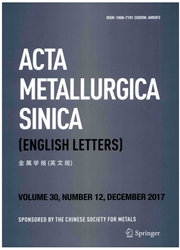

 中文摘要:
中文摘要:
X 光检查衍射,拉曼光谱学和扫描电子显微镜学被采用在在在 NaCl 答案沉浸的钢的表面上形成的腐蚀产品的作文,形成和结构上调查 DC 电场的效果。结果显示出那 goethite (-FeOOH), akaganeite (-FeOOH), 纤铁矿(-FeOOH) 和磁铁矿(Fe 3 O 4) 是在腐蚀产品之中的主要成分。DC 电场紧张的不同层次的安排产生下列结果。小更高的 DC 电场紧张(在 100-200 附近 ? kV/m ) 支持 -FeOOH 的 crystallinity 和生长;显然,高得多的 DC 电场紧张(比 400 大 ? kV/m ) 阻止 -FeOOH 的生长并且便于 Fe 3 O 4 。两个都, -FeOOH 的宣传生长和 -FeOOH 生长的抑制显示了锈层的保护的软弱。因而,从 -FeOOH 的 -FeOOH 的转变的抑制赞成 Fe 3 作为一个大阴极区域工作的 O 4, 并且就要将加快随后的钢腐蚀。
 英文摘要:
英文摘要:
X-ray diffraction, Raman spectroscopy and scanning electron microscopy were employed to investigate the effects of the DC electric field on the composition, formation and structure of corrosion products formed on the surface of the steel immersed in NaCl solution. The results show that goethite (α-FeOOH), akaganeite (β-FeOOH), lepidocrocite (γ- FeOOH) and magnetite (Fe3O4) are the major constituents among the corrosion products. The arrangement of different levels of the DC electric field intensity gives rise to the following results. The little higher DC electric field intensity (around 100-200 kV/m) promotes the crystallinity and growth of y-FeOOH; obviously, much higher DC electric field intensity (greater than 400 kV/m) prevents the growth of α-FeOOH and facilitates the generation of Fe3O4. Both the promotional growth of γ-FeOOH and suppression of α-FeOOH growth indicated the weakness of the protectiveness of the rust layer. Consequently, the suppression of the transformation of α-FeOOH from y-FeOOH favors the yield of the Fe3O4, which works as a large cathode area and would be about to quicken the subsequent steel corrosion.
 同期刊论文项目
同期刊论文项目
 同项目期刊论文
同项目期刊论文
 期刊信息
期刊信息
